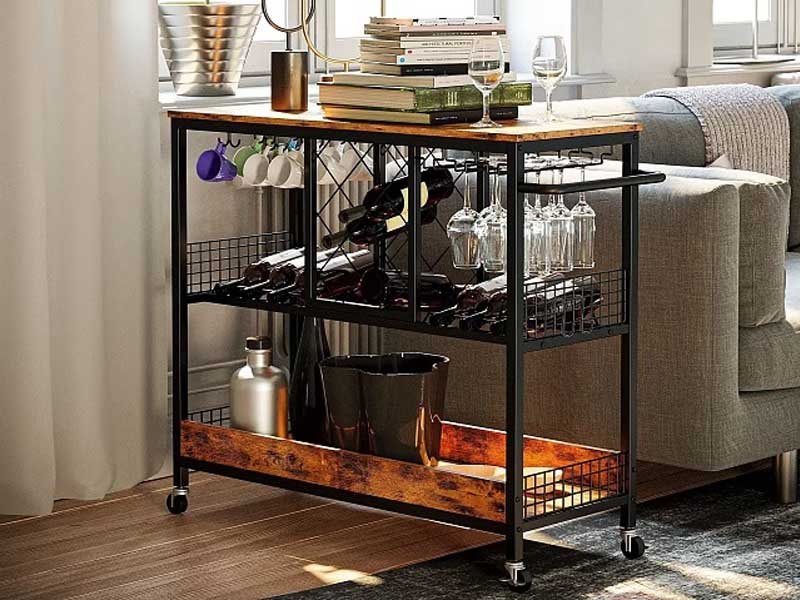I remember buying my first piece of chipboard furniture, attracted by the low cost and ease of assembly. However, I quickly learned that its longevity wasn't quite the same as solid wood or high-grade MDF. Quality chipboard furniture can serve you well, but it requires understanding its nature and how to care for it properly.
Quality chipboard furniture typically lasts between 5-20 years. For high-wear items, expect around 5-10 years, while low-use pieces might survive 10-20 years. Its lifespan drops significantly if exposed to moisture or severe conditions, so proper maintenance is key.
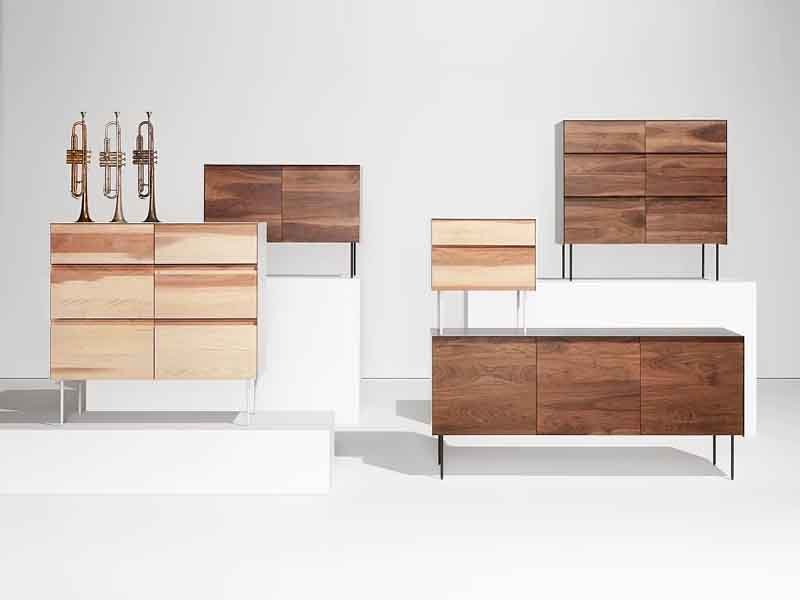
By understanding factors like environmental exposure and maintenance practices, you can maximize the utility of chipboard furniture. In the following article, we'll dive into practical tips and strategies to extend its lifespan and when it might be time to consider replacement.
1. How Can You Judge the Lifespan of Chipboard Furniture?
Cheap chipboard often wears out early, wasting your investment. Poor particle quality or weak resin leads to fragile boards. However, high-grade chipboard1 brings lasting value.
The durability of chipboard furniture relies on wood particle quality, board density, resin type, and thickness. High-density, well-bonded chipboard with strong resins is more resistant to wear and lasts longer, offering better performance for furniture use.
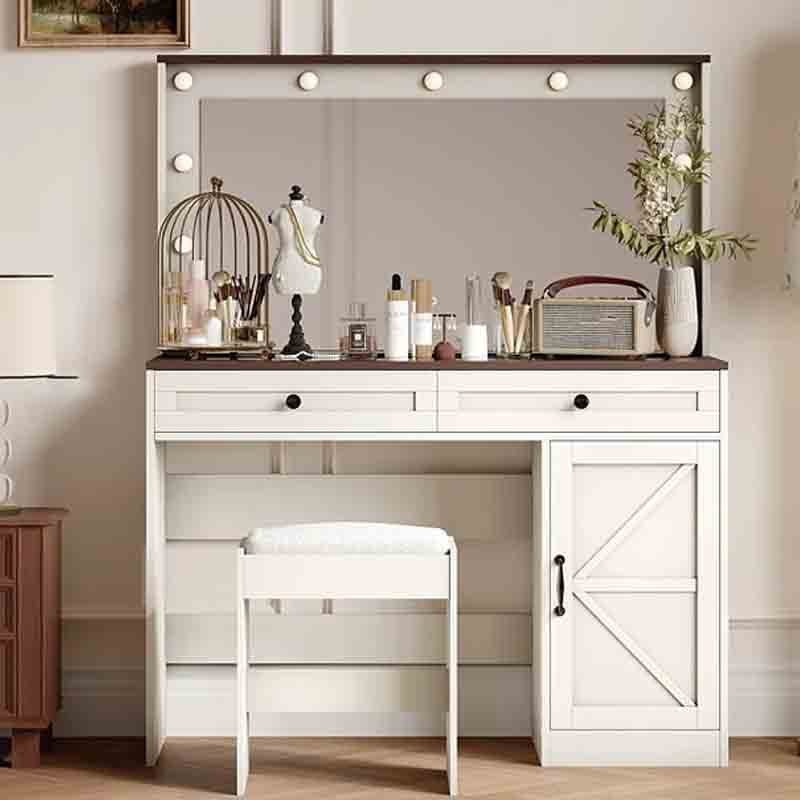
What Elements Define Chipboard Strength?
Raw Material Quality2
Manufacturers create chipboard from sawdust, chips, and small wood particles. These must be free from contaminants. If raw materials are dusty or degraded, boards may crack or crumble under light pressure. From my experience working with furniture over years, I have seen low-quality chipboard shelves sag early and lose screws within months. Good boards use clean, hard wood particles, ensuring solid internal bonds and a smoother finish.
Board Density3: Why Does It Matter?
Furniture-grade chipboard ranges from 550 to 700 kg/m³ in density. Higher-density boards feel heavier and resist warping. They support more weight, making them ideal for desks and cabinets that face frequent daily use. Lower-density particleboard often fails fast under stress. Once, I replaced a table made with soft, light chipboard after only one year due to visible dents and cracks. In contrast, higher-density versions withstood move-in and daily traffic much better.
| Chipboard Density | Common Use | Durability Level |
|---|---|---|
| 450–550 kg/m³ | Wall panels | Moderate |
| 550–700 kg/m³ | Furniture | High |
| 700+ kg/m³ | Flooring | Very High |
Resin Types: The Glue That Holds It Together
Resins bind wood particles together. Urea-formaldehyde (UF)4, melamine-urea-formaldehyde (MUF), and phenolic resins each offer unique benefits. UF is most common but less water-resistant. MUF adds moisture defense, while phenolic resins bring exceptional weather resistance and strength. When choosing chipboard for furniture, boards with MUF or phenolic resins5 last longer in humid rooms, such as kitchens. UF-bonded chipboard might swell or flake if exposed to moisture.
Thickness: Supporting the Structure
Thickness6 also affects performance. Thicker boards (18mm+) resist bowing more than thin panels. Thin chipboard shelves may flex or break if overloaded. Each time I assembled furniture at home, I noticed thick chipboard felt more stable, especially for heavy use areas like bookshelves.
How to Make a Thoughtful Choice
Understanding these factors makes picking the right chipboard easier. Ask about density, resin type, and thickness. Check for a solid, heavy feel and a smooth surface. Boards meeting these standards offer years of reliable use, helping you avoid frequent repairs or early replacement. Good chipboard supports not just your furniture, but your peace of mind.
High-density chipboard is more resistant to wear and lasts longer than low-density chipboard.True
Higher density chipboard has better durability due to its construction, making it more resistant to warping and damage over time.
All types of chipboard have the same level of durability regardless of their density and resin type.False
Different densities and resin types significantly affect the durability of chipboard, with higher density and better resin providing superior strength and longevity.
2. What Shortens Chipboard’s Lifespan the Fastest?
When chipboard fails too soon, it is usually an overlooked environmental problem. You might expect better longevity, but ignoring key risks can ruin performance and cost you more over time.
Humidity, temperature changes, and sunlight are the most common reasons for chipboard’s early failure. Standard chipboard degrades quickly in wet and changing climates. Moisture-resistant products survive longer but need correct installation and care.
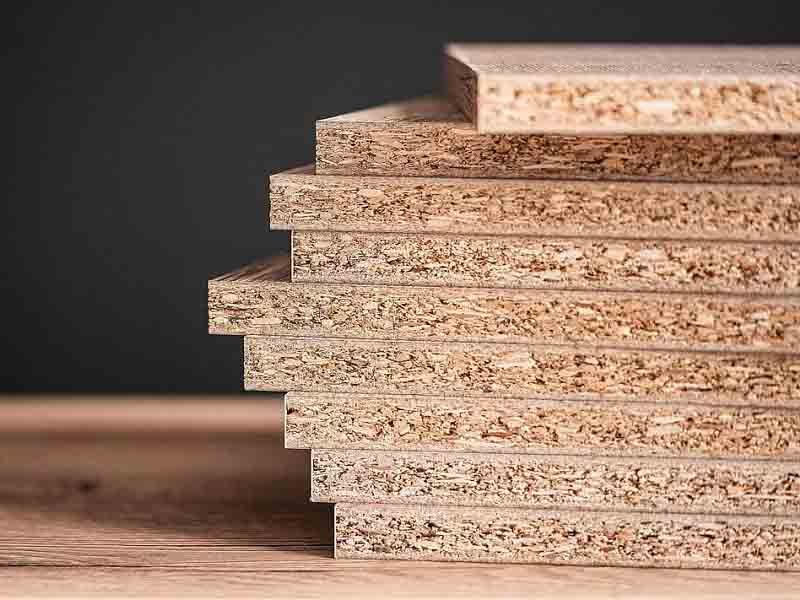
How Does Moisture Change Chipboard Over Time?
Chipboard reacts strongly to moisture. The material is hygroscopic7. This means it pulls water from the air. Regular chipboard swells when it takes in too much moisture. When that happens, the fibers and glue loosen. Boards lose their shape and strength. If chipboard is used in a place like a bathroom, kitchen, or unsealed basement, early swelling8 is almost certain.
I have seen this up close. Years ago, I worked on a project in a humid coastal city. We installed standard chipboard for shelving. Within a year, we saw visible bulging and softness. It was clear we selected the wrong product for the environment. We replaced it with moisture-resistant (MR) chipboard. This grade uses resins that fight off swelling. It lasted far longer.
Table: Chipboard Performance in Different Conditions
| Condition | Standard Chipboard | MR Chipboard |
|---|---|---|
| Dry indoor air | Good | Excellent |
| High humidity | Poor | Moderate/Good |
| Direct water contact | Rapid failure | Slower failure |
| UV sunlight | Surface fades | Surface fades |
| Wide temperature shifts | Weakens over time | Weakens less |
Why Is Temperature a Long-Term Threat?
Temperature changes attack chipboard from another angle. Most homes experience cycles: hot days, cold nights, or seasonal shifts. The glue in chipboard cannot move like solid wood. When heated, resins soften. When cold, they can go brittle. I have handled old shelving in attics and seen the effects. The board flakes at the corners and cracks along the edges. This slow breakdown is hard to stop after it begins.
In climates with harsh temperature swings, both standard and MR types weaken faster. There is no complete solution except for limiting exposure and selecting the grade carefully.
How Bad Is Sunlight for Chipboard?
Sunlight is another silent enemy. UV radiation9 targets the surface of the board. Within a year, you might see yellowing or fading. After many seasons, the surface gets chalky and weak. This look is not just cosmetic. UV rays break down the binder holding the chipboard together. For furniture or paneling near windows, I now always recommend protection: blinds, curtains, or a UV-resistant finish.
Choosing the Right Grade and Protection
There is no perfect chipboard for every place. I always ask: Is there high humidity? Will the board face water spills? Is there direct sun or hot attics? If the answer is yes to any, moisture-resistant (MR) chipboard10 should be the starting point. Finishing the surface with paint, laminate, or sealant slows down damage. For outdoor use, no grade of chipboard is recommended.
Final Thoughts
Understanding environment risks saves money and trouble. Chipboard can serve for years, but how long depends on choices made before installation: pick the right grade, control moisture, and keep out the sun when possible. These steps keep the board strong and looking good.
Humidity and sunlight are primary factors that shorten chipboard's lifespan.True
Both humidity and sunlight contribute significantly to the degradation of chipboard, leading to early failure and reduced performance.
Moisture-resistant chipboard cannot fail in any environmental conditions.False
While moisture-resistant chipboard lasts longer in adverse conditions, it can still fail if exposed to improper installation or extreme environmental factors.
3. How Long Does Chipboard Furniture Really Last Indoors?
Worried about your furniture’s lifespan11? Many overlook the factors that quietly shorten chipboard’s life, leading to frustration and replacement costs. Thankfully, you can extend its durability by understanding what matters.
Quality chipboard furniture lasts 5-20 years indoors, varying by use and care. High-wear pieces last 5-10 years; less-used, thickly laminated ones can last up to 20 years. Poor maintenance or moisture can drop lifespan below 5 years.
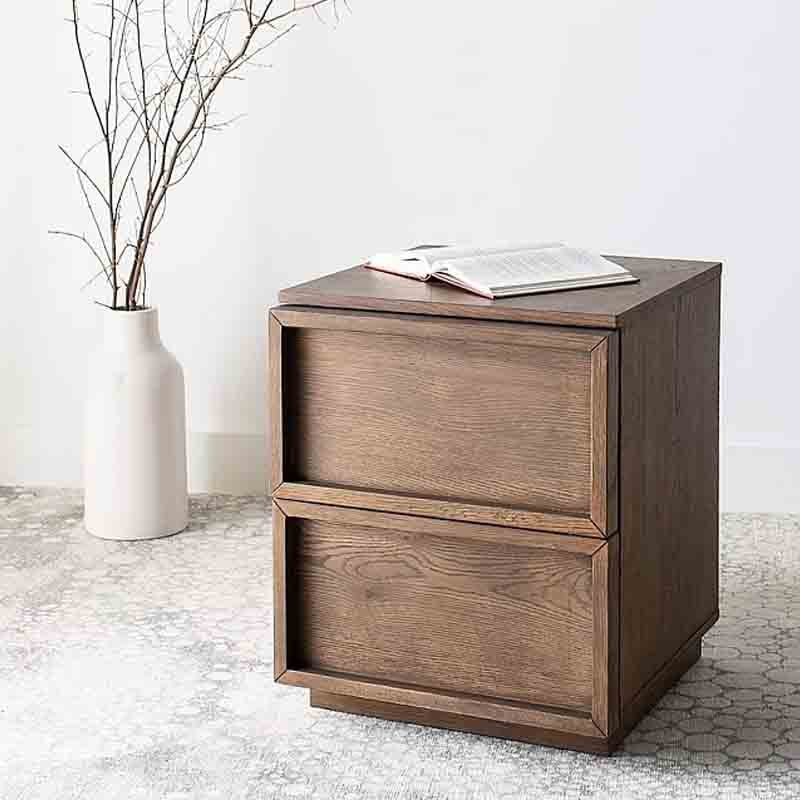
Key Factors That Influence Chipboard Longevity
Different chipboard12 furniture ages at different rates. I have owned several chipboard pieces, and their lifespans varied. Let’s look at the specifics.
Comparing Lifespans by Use and Build Quality
Material thickness, surface treatment, and how often it is used all change how long chipboard lasts. I learned this after replacing thin-laminated desks far sooner than expected. Here is a table that shows expected lifespan under controlled conditions:
| Furniture Use Case | Expected Lifespan | Main Influences |
|---|---|---|
| High-wear surfaces (desks, cabinets) | 5-10 years | Thin laminate, frequent use |
| Low-use items (beds, wardrobes, shelving) | 10-20 years | Thick, laminated, less use |
| Exposed to moisture, poorly maintained | Under 5 years | Environment, neglect |
Higher-wear furniture, such as desks and kitchen cabinets, face frequent contact with liquids, heat, and abrasion. These pieces often use thinner laminate13 for cost or style. In my experience, the desk in my home office developed edge chipping after about six years, especially in places I touched daily.
Low-use furniture, like shelving or wardrobes in a spare room, lasts much longer. Thick, laminated, or veneered chipboard resists dents and swelling. My childhood bookshelf still looks presentable after more than a decade, thanks to infrequent movement and a stable room climate.
Why Moisture Changes Everything
Chipboard is especially vulnerable to water. If the material absorbs moisture, it swells and loses structural strength. The weakest points appear at corners or where veneers peel. A friend once left a chipboard nightstand near a window, letting condensation run down the back. Three years later, it sagged and needed replacement, even though the top still seemed fine.
Humidity also matters. Indoor environments with 50-60% relative humidity help chipboard resist warping or swelling. High humidity14 or leaks can reduce furniture lifespan to less than five years. Preventing this means keeping items away from sinks or bathrooms.
Maintenance and Handling Practices
Careful cleaning and regular checks for loose edges extend life. Never use wet cloths on chipboard. I have fixed minor chips with wood filler and touched up laminates, which helped me avoid early repair costs.
Summary: Set Realistic Expectations
Knowing how long chipboard furniture lasts lets you plan ahead. If you want short-term value, chipboard works for desks and surfaces that see heavy daily use, though expect to replace them within a decade. For items that hold their shape and look longer, use thick, well-laminated chipboard and control indoor air moisture. Small changes in care and environment make a big difference in real-life furniture lifespan.
Quality chipboard furniture can last between 5 to 20 years indoors.True
The lifespan of chipboard furniture varies based on usage and care, ranging from 5 years for high-wear items to 20 years for less-used, well-maintained pieces.
Chipboard furniture never needs maintenance to extend its lifespan.False
Regular maintenance, such as careful cleaning and checks for damage, is necessary to extend the life of chipboard furniture, as neglect can lead to significant deterioration.
4. How Does Quality Edgebanding Extend Chipboard Lifespan?
Chipboard edges left unsealed attract moisture, leading to fast deterioration. Damaged edges ruin surfaces. Proper sealing and tough finishing offer strong protection and prevent these problems.
Sealing chipboard edges with PVC, ABS, or melamine bands blocks moisture. High-quality laminate or veneer surfaces also shield from daily damage. Together, these measures greatly extend chipboard’s usable life by protecting it against wear and environmental harm.
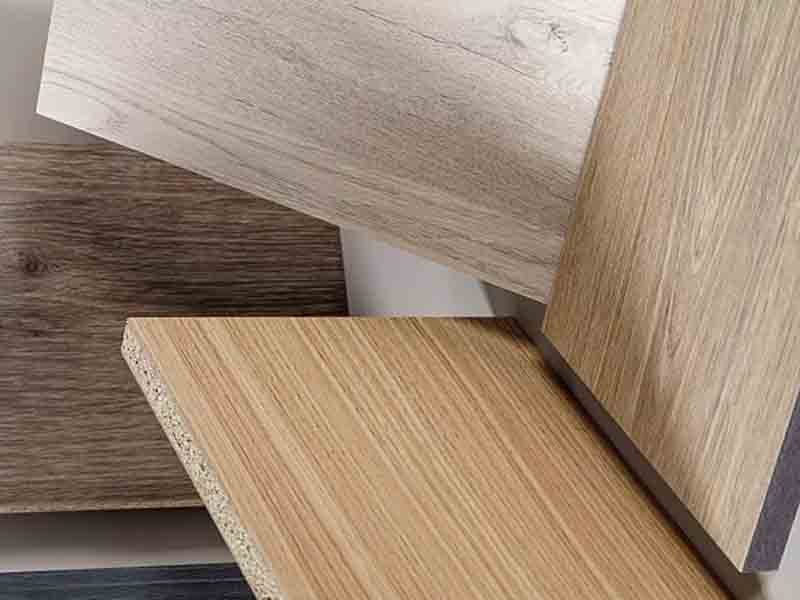
Why Are Exposed Chipboard Edges a Problem?
Every time I see unprotected chipboard, I know what will happen. Moisture sneaks in through open edges. Swelling and warping follow. Soon, that clean finish turns rough and the panel loses its strength.
Moisture is chipboard’s biggest enemy. Particle structure in chipboard acts like a sponge. Exposed edges let water and steam soak in. This is not a small risk. Even swings in humidity over a few weeks can bring lasting damage.
How Does Edgebanding Prevent Moisture Damage?
Edgebanding creates a physical barrier. When I use PVC, ABS, or melamine bands on raw edges, water cannot pass through. These materials are not only waterproof. They also bond well and resist cracking.
Here is a table that compares common backing materials:
| Edgebanding Material | Water Resistance | Durability | Common Uses |
|---|---|---|---|
| PVC | High | Flexible | Kitchens, Worktops |
| ABS | High | Rigid | High-traffic areas |
| Melamine | Moderate | Hard | Decorative panels |
The tight seal from proper edgebanding15 protects chipboard for years. It stops swelling and helps panels stay flat. After working on many furniture projects, I have seen that poorly banded edges always fail first. Chips appear, then cracks. Proper banding truly matters.
Does Surface Thickness](https://www.timexmica.com/blog/the-impact-of-laminate-sheet-thickness-on-performance-and-durability/)[^16] Matter for Durability?
Many think a thin decorative surface is enough. It is not. Laminate or veneer layers thinner than 0.5mm wear down fast. They scratch, lose their color, and peel off.
Surfaces at least 0.5mm thick resist sharp impacts, cleaning chemicals, and everyday scratches. They feel stronger when you touch them. Over years, this means fewer repairs and longer use. Thick finishes also hide minor dents and disguise edge joins.
When I rebuilt my workshop cabinets, I used tough laminate over every flat surface. Five years later, they look nearly new. It was a simple choice that saved me time and money on maintenance.
Key Takeaways for Long-lasting Chipboard
I always advise people to never skip quality edgebanding. Choose the right thickness for finishing surfaces. Both steps turn chipboard from a fragile base material into a tough, long-lasting solution. If you want furniture or panels that last, do not overlook these simple but vital details.
Proper sealing of chipboard edges significantly extends their lifespan.True
Sealing prevents moisture absorption, protecting the chipboard from deterioration and damage.
Thin decorative surfaces of less than 0.5mm are just as durable as thicker laminates.False
Thin surfaces wear down quickly and are more prone to damages compared to surfaces that are at least 0.5mm thick.
5. How Do Fasteners Affect Chipboard Furniture Longevity?
Chipboard furniture often faces early failure. Weak screw holding](https://allpointsfasteners.com/blog/particle-board-screw-and-chip-board-screws.html)[^17] creates hidden risks. Understanding joint choices16 and assembly17 can protect both investment and daily use.
Chipboard’s lower screw strength means fastener choice and careful assembly greatly influence long-term durability. Using dowels, cam locks, and quality fasteners preserves stability. Over-tightening or repeated disassembly weakens joints and shortens lifespan.
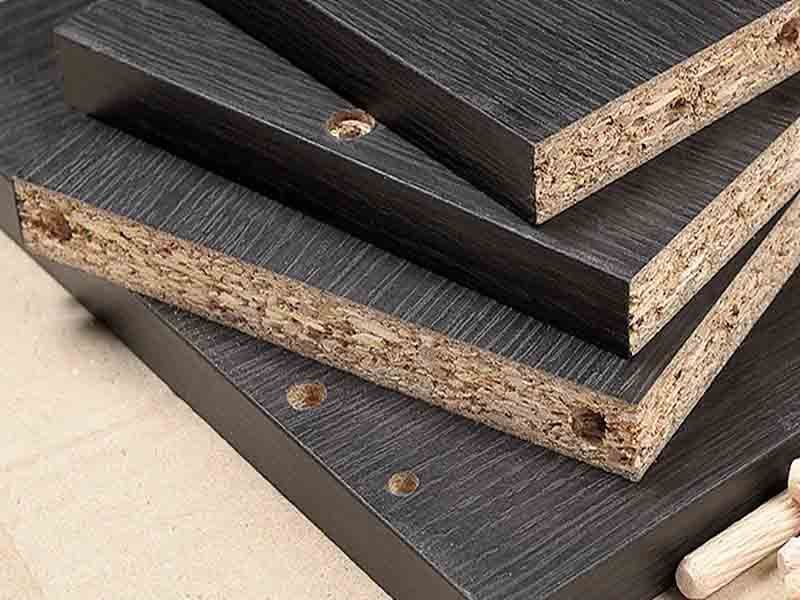
The Challenge of Screw Holding in Chipboard
Chipboard is a popular material. Many people choose it for furniture because it is affordable and easy to process. However, chipboard has a disadvantage. Its internal structure is made from small wood particles. These particles hold screws less tightly compared to medium-density fiberboard (MDF) or plywood. On average, chipboard offers 600–900N withdrawal strength for screws. MDF and plywood generally provide higher numbers.
I saw this difference first-hand while assembling a flat-pack shelf. The chipboard panels felt light. I noticed that when I tightened the screw a bit too hard, the hole became loose. That never happened with MDF before. Most people can make the same mistake; it is easy to over-tighten when you think a joint is loose. But with chipboard, this damages the fibers around the screw and quickly reduces the joint’s strength.
How Fasteners and Joints Influence Longevity
Joint design and the fastener type make a big impact on structural integrity. For chipboard, furniture makers often use special types of joints and fasteners. These can include:
| Fastener/Joint Type | Strength Benefit | Risk When Misused |
|---|---|---|
| Standard Screw | Low holding power in chipboard | Over-tightening strips hole |
| Dowel | Higher, spreads load wider | Poor alignment weakens joint |
| Cam Lock | Secure, less stress locally | Can snap if forced |
| High-Grade Screw | Better thread design | Still vulnerable to overtightening |
| Glue (with other fasteners) | Greatly improves holding | Needs precise application |
Dowels and cam locks support the chipboard by spreading forces over a wider area. This reduces pressure on any single spot, which keeps the joint tight longer. High-grade screws made specifically for particle boards have threads that grip better. But even these cannot protect against careless installation.
Common Assembly Issues and Practical Habits
People often assemble and disassemble flat-pack furniture more than once. For homes or offices that move, this is common. Each time you unscrew and reattach a fastener, the hole in chipboard gets weaker. Unlike hardwood, the fibers do not heal around the screw. Instead, the opening grows wider and weaker. Eventually, the screw will not grip at all.
If you feel resistance when tightening, do not force it. I learned to stop before the screw spins freely18. Using a hand screwdriver instead of a power tool helps. It is also wise to check for clear pilot holes. These guide the screw and prevent splitting.
Assembly Tips for Chipboard Durability
- Use dowels or cam locks19 if available.
- Avoid overtightening by stopping as soon as resistance increases.
- Insert screws straight, never at an angle.
- Apply glue to dowel or cam lock joints.
- Consider brass inserts for frequently disassembled joints.
Over time, joints that depend only on screws lose strength. Thoughtful assembly, careful handling, and the right fasteners help chipboard furniture last longer. This knowledge can help anyone avoid common failures and make the most of their furniture investment.
The choice of fasteners significantly impacts the durability of chipboard furniture.True
Fastener type and joint design can improve or weaken the structural integrity of chipboard furniture, directly affecting its longevity.
Chipboard furniture can support screws as firmly as hardwood furniture.False
Chipboard has a lower holding power for screws compared to hardwood due to its internal structure, making it more susceptible to damage from over-tightening.
6. How Can Simple Habits Extend Chipboard Furniture Lifespan?
Neglect leads to damage and wasted money. When habits slip, chipboard suffers. Routine care builds value and preserves looks20.
The longest-lasting chipboard furniture is achieved by protecting from moisture, tightening loose fittings, fixing surface damage early, and keeping pieces away from heat and sunlight. Small adjustments add years to the life of every item.
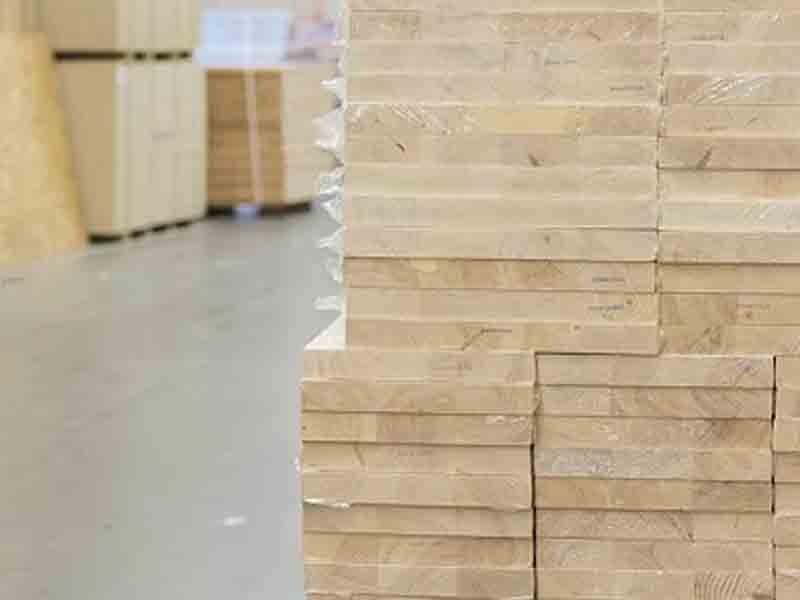
Why Is Maintenance Critical for Chipboard Furniture Longevity?
Chipboard looks much like natural wood. Yet, inside, I know chipboard is heavily compressed wood particles and glue. Its affordable cost often draws me in. But, unlike solid wood, it reacts fast to water and heat. These weak points can limit its lifespan unless I act thoughtfully.
1. Moisture: The Main Threat21
If water spills on chipboard and I do not clean it swiftly, swelling might appear. Over time, hidden water ingress causes material breakdown. Using coasters and mats seems minor. But, after my daughter once left a sweating juice glass unattended, I learned that one hour was enough for the edges to puff up. A simple coaster could have saved the cleanup and repair.
2. Loose Fasteners: Weak Joints Over Time22
Furniture wears out slowly, often at the joints. Screws may loosen each year from use and movement. I schedule a quick check every few months to tighten everything. If not, the structure gets shaky, and joint fatigue starts cracks or instability. Tight connections distribute weight correctly and keep chipboard from failing under everyday pressure.
| Problem | Simple Habit | Why It Works |
|---|---|---|
| Water damage | Use mats/coasters | Stops swelling and warping |
| Loose screws or fittings | Regular tightening | Prevents structural fatigue |
| Laminate chips/scratches | Prompt repairs | Stops water from entering |
| Heat/sunlight exposure | Careful placement | Prevents fading and cracks |
3. Laminate Repairs: Small Chips, Big Impact
Cuts or scratches in the laminate seem harmless at first. However, I discovered peeling corners cause major entry points for daily spills or moisture in the air. Whenever I notice damage, I use laminate repair kits or color-matched filler immediately. That closes off the path for deeper harm and stains.
4. Where You Put Furniture Matters
Chipboard’s adhesives soften under heat. Placing it beside radiators or in direct sun risks warping and discoloration. I now keep my bookshelves at least one meter from heaters and always close the curtains in bright summer light.
How Do Daily Habits Add Up?
Long life for chipboard is not luck. It is a sum of small behaviors. I learned that every drink coaster, every minute checking screws, and every seal on a scratch forms an invisible shield. Over time, this saves time, money, and frustration. When I treat my chipboard with the same care as expensive hardwood, I see it stays in good shape and looks presentable—year after year.
Regular maintenance significantly extends the lifespan of chipboard furniture.True
Routine care like tightening screws, using coasters, and making prompt repairs helps prevent damage and preserve the integrity of chipboard furniture.
Chipboard furniture lasts indefinitely without any maintenance.False
Chipboard furniture requires regular maintenance to avoid moisture damage, loose fittings, and other issues that can shorten its lifespan.
7. Which Wood Material Lasts the Longest: Chipboard, MDF, Plywood, or Solid Wood?
Is your furniture wearing out too soon? Weak materials can ruin your investment. Understanding how long each wood option lasts helps you choose the right one for your needs.
Solid wood lasts the longest, followed by high-grade plywood, basic MDF and chipboard, with chipboard outperforming low-grade particleboard but lagging behind moisture-resistant MDF and exterior plywood for durability.
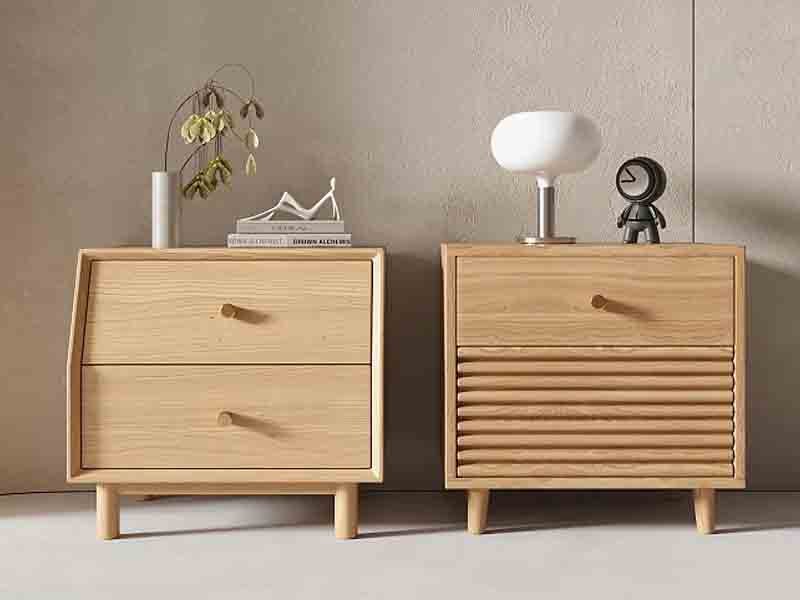
Comparing Longevity: Why Material Choice Matters
I have seen homeowners frustrated when furniture fails far sooner than they expected. The key comes down to wood material selection23. engineered wood product24 product has a unique place on the durability spectrum, impacting everything from cost to performance.
How Do Major Materials Compare?
Below is a straightforward table outlining typical expected lifespans25, based on well-manufactured and maintained products:
| Material Type | Typical Lifespan |
|---|---|
| Solid Wood | 30–50+ years |
| High-Grade Plywood | 15–30 years |
| Moisture-Resistant MDF | 10–20 years |
| Basic MDF | 7–15 years |
| Chipboard | 7–15 years |
| Low-Grade Particleboard | 3–7 years |
I used a solid wood dining table for decades in my family. The finish wore down, but the core structure stayed strong. This matches what most people see: solid wood is the longest-lasting. It resists warping, handles stress well, and holds up to refinishing.
High-grade plywood comes next. Its cross-layered construction gives it good strength, especially for cabinets or shelves. Plywood stands up to heavy use, but exposure to serious moisture can shorten its life.
Moisture-resistant MDF offers a middle ground. If you need something for damp spaces, such as kitchens or bathrooms, this version of MDF stands up better than basic MDF or chipboard. Regular MDF and chipboard both give moderate lifespans when conditions stay dry and usage is light. I have worked with chipboard in simple bedroom furniture. With care, it held up for about 10 years. However, the slightest water spill caused damage that weakened corners and joints.
Chipboard outlasts low-grade particleboard because its manufacturing makes the board denser. Still, I would never use chipboard for any area that needs to face repeated stress or moisture. Over time, its edges and surfaces chip and sag.
Environment Makes a Difference
Environment shapes furniture life. In dry bedrooms or offices, well-made chipboard and MDF work fine for several years. In kitchens, bathrooms, or laundry rooms, always pick moisture-resistant MDF[28], exterior-grade plywood, or, ideally, solid wood for the best long-term value.
Cost Versus Longevity
Cheaper materials save money up front. Yet, if you want a piece to last, think long-term. Stronger woods mean fewer repairs and replacements. I advise clients to match their furniture materials to their usage expectations and environment.
When life span is the biggest concern, solid wood and high-grade plywood26 deliver the most reliable results. Chipboard, while better than the lowest-grade options, is always a budget-first, short-to-medium-term choice. Choose wisely for lasting satisfaction.
Solid wood is the longest-lasting wood material.True
No explanation available.
Chipboard outlasts solid wood in all conditions.False
No explanation available.
8. When Is Chipboard Furniture the Smartest Choice for Your Space?
Struggling to furnish a space on a tight budget? Frustrated by choices that do not balance cost and function? Let me share a practical solution that fits many needs.
Chipboard furniture is ideal for budget-conscious or temporary set-ups, flat-pack designs, and rooms with stable humidity. It offers affordability, easy assembly, and works best in bedrooms or living rooms, away from humidity and moisture.
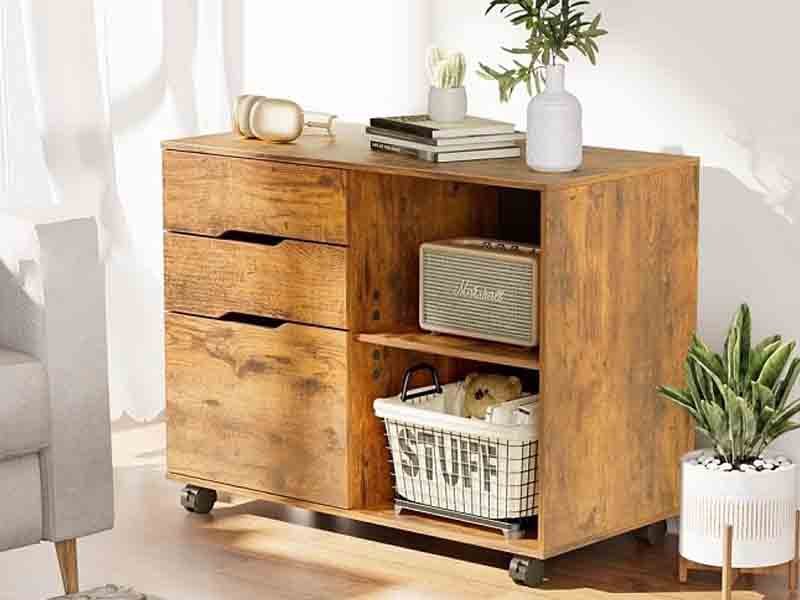
Understanding When Chipboard Furniture Excels
Many people I know want good-looking furniture without spending much. Sometimes, they just need something basic and practical while saving for a long-term investment. I have been there, too, when moving into my first apartment. So, I looked for furniture that was both affordable and easy to put together by myself. That is how I started using chipboard furniture27.
Cost-Effective Choices for Every Budget
Chipboard stands out when price is a top concern. Unlike solid wood or plywood, chipboard costs a lot less. I remember hunting for desks and bookshelves for under a hundred dollars. Chipboard gave me more options for my budget. This makes it popular with students, new homeowners, and anyone who wants to furnish a space for just a few years. If you do not want to spend much—or plan to move soon—chipboard is often the way to go.
Best for Flat-Pack and Modular Designs
Today, many furniture items come in flat-pack boxes. These are meant for quick, tool-free assembly at home. Since chipboard is light and stable, it is a favorite for this kind of furniture. I found the parts easy to handle alone. Flat-pack chipboard lets me change the layout of a room by moving or replacing single pieces without heavy lifting or calling for help.
Table: When Should You Choose Chipboard Furniture?
| Scenario | Chipboard Suitability | Key Reason |
|---|---|---|
| Budget-friendly furnishing | Excellent | Lowest cost |
| Rental apartments or temporary setups | Excellent | Easy to assemble/replace |
| Bedrooms, living rooms (dry conditions) | Excellent | Low moisture risk |
| Kitchens, bathrooms, laundry rooms | Not suitable | High moisture risk |
| Repeated assembly/disassembly needed | Less suitable | Weakens over time |
Environmental Suitability
One important thing I learned is that chipboard can swell or break down if it gets wet. That is why I keep chipboard bookcases and side tables in dry spaces like my living room or bedroom. Chipboard is not a good choice for bathrooms, laundry rooms, or kitchens with water risks. If you expect spills or high humidity, choose something else.
Ideal Uses in Modern Living
In my own experience, chipboard worked great for short stays in rental homes. It gave me the flexibility to furnish rooms for a year or two without worrying about long-term value loss. If I needed to change something, I did not lose sleep over getting rid of an inexpensive piece. For those who want simple, modular furniture28 without breaking the bank, chipboard delivers.
What to Keep in Mind
Chipboard is practical for many uses, but it has limits. If you plan to move furniture often or take it apart and put it back together, the joints can get loose or break. I needed to be careful and avoid over-tightening screws after rebuilding my desk a couple of times.
In summary, chipboard furniture shines in the right setting. Use it where cost matters most, where you need modular flat-pack design29, and in places where you can keep things dry. Avoid it where heat, moisture, or constant rebuilding is a risk. As a former budget renter and now a homeowner, I saw how chipboard fits specific roles perfectly when chosen wisely.
Chipboard furniture is a cost-effective option for budget-conscious consumers.True
Chipboard is significantly cheaper than solid wood or plywood, making it ideal for those looking to furnish on a budget.
Chipboard furniture is best suited for high moisture areas like kitchens and bathrooms.False
Chipboard can swell and break down when exposed to moisture, so it is not suitable for environments with high humidity.
9. How Can You Tell When Chipboard Furniture Needs Replacing?
You may assume your furniture is fine until hidden damage shows up. Neglecting warning signs leads to bigger problems. Learn the simple ways to spot chipboard issues30 before it’s too late.
You can tell chipboard furniture needs replacing if you see swollen edges, sagging shelves beyond safe limits, surfaces peeling, loud creaks, or hardware loosening after several assemblies. Moisture damage or loss of strength means it is time for replacement.
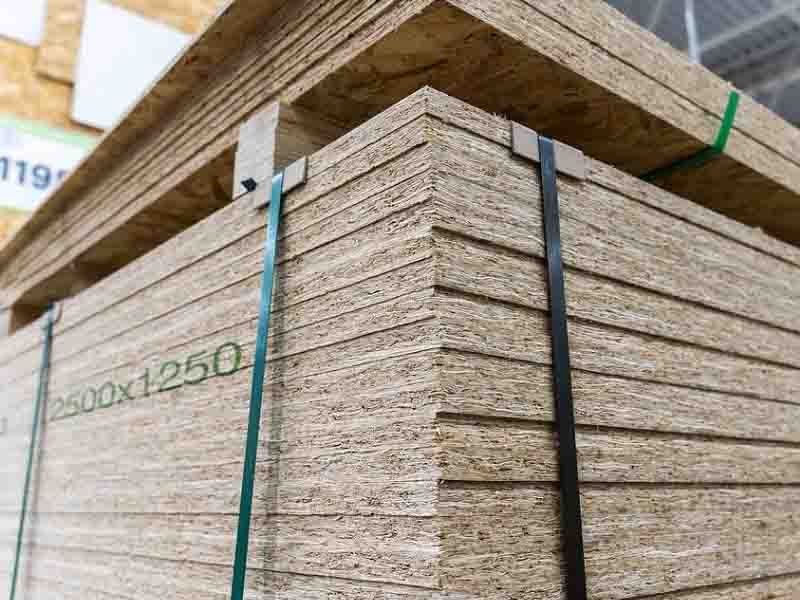
Recognizing Deterioration: What to Watch For
I see many people keep using their chipboard furniture long after it starts to show problems. Most hope small issues will stay small. I have learned that small problems often mean bigger ones are coming. That is why I check my furniture for signs of aging every few months. You do not need any special tools—just a good eye and some common sense.
First, I run my hand along the edges and corners. If I feel any soft, swollen, or spongy areas, I know moisture has gotten in. Most swelling shows up near joints, under windows, or where cups have been left out. Swollen wood cannot be reversed. Once water damages the board, the chipboard loses strength fast. This is an early sign that replacement is needed.
Next, I look at the shelves. I check if any are bowing or sagging under the weight of books, dishes, or storage bins. There is a simple rule for this: the L/180 span rule31. Take the length (L) of the shelf in millimeters, then divide by 180. If the midpoint sags more than this, the shelf is past its safe use limit. Here is a quick guide:
| Shelf Length (mm) | Max Allowable Sag (mm) |
|---|---|
| 900 | 5 |
| 1200 | 7 |
| 1500 | 8 |
| 1800 | 10 |
If I see the shelf sag32 beyond these numbers, I know the structure of the chipboard is weak. It is not just about looks. Shelves past this limit may break suddenly.
I also check for peeling or delaminating surfaces33. If the surface is bubbling, chipping, or separating from the board, then the protective layer has failed. This lets in more moisture and weakens the whole piece.
Creaking noises from joints matter, too. Every time I move or use the furniture, I listen. Persistent creaks can mean screws or fasteners have loosened in the chipboard. This gets worse with each reassembly. After several moves, I sometimes find that screws will not bite into the holes at all. This is because the compressed wood inside has broken down.
In my experience, once these signs show up together, there is no way to save the furniture. Some people try to repair with glue or brackets, but this only lasts a short time. The real risk is that weakened furniture will collapse without warning. This is especially dangerous with shelving.
Knowing When It’s Time to Give Up
Some stains or scratches can be fixed. But structural weakness34, sagging, swollen panels, or screw holes that will not hold—these are clear signs it is time to let go. I suggest checking each point on this list every few months:
| Indicator | Safe to Repair? | Replace? |
|---|---|---|
| Swollen edges/panels | No | Yes |
| Shelf sag beyond L/180 | No | Yes |
| Peeling/delaminating surface | No | Yes |
| Joints always creaking | Rarely | Yes |
| Screws don’t hold | No | Yes |
For me, the cost and hassle of repair always outweigh the benefits once these issues appear. Replacing chipboard furniture keeps my space safer and looking better. Be proactive—spot the signs early, and you will avoid sudden failures or potential accidents.
Swollen edges and sagging shelves indicate that chipboard furniture needs to be replaced.True
These signs suggest moisture damage and structural weakness, making replacement necessary for safety.
Chipboard furniture can be repaired indefinitely despite severe damage like sagging or swollen edges.False
Severe damage such as sagging or swollen edges means the furniture is structurally compromised and cannot be effectively repaired for long-term use.
10. How Do Industry Standards Guarantee Chipboard Furniture Quality?
Worried about toxic furniture or products that do not last? Standards can help. Knowing what real certification means saves time and gives peace of mind.
Industry standards like EN 312, EN 13986, and CARB Phase 2 ensure chipboard furniture is safe, low in emissions, and built to last. Certification and quality control during manufacturing raise furniture quality and extend its lifespan.
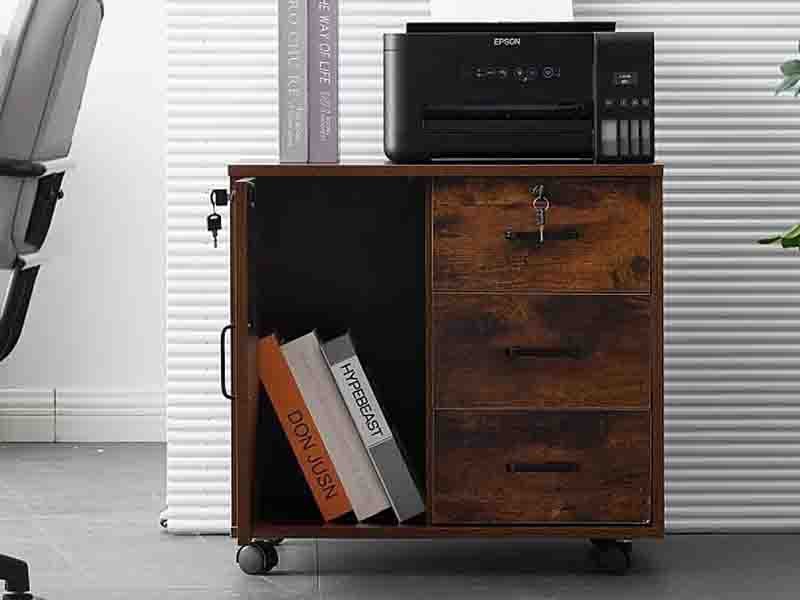
Understanding Chipboard Standards and Their Impact
When shopping for chipboard furniture, I always get questions about what makes one product better than another. When I first started looking into this, I thought price was the main thing. Now, I know this is not true. What matters is whether the product meets real industry standards and quality certification.
What Are EN 312 and EN 13986 Standards?
EN 31235 is a European standard for particleboards. This standard tells you that a board is strong enough for making furniture. It covers moisture resistance, load-bearing strength, and durability. Most high-quality chipboard furniture will mention this number somewhere, either on labels or in product details.
EN 13986 focuses on formaldehyde emissions. Formaldehyde is a chemical that can harm your health if furniture releases too much of it into the air. This standard makes sure the product keeps emissions at a safe level. CARB Phase 2 from California is another standard for low formaldehyde release, often stricter than European rules.
E1 and E0: Why Low Emission Ratings Matter
You’ll see “E1” and “E0” ratings on many chipboard boards. These marks show how much formaldehyde the product gives off. I always go for "E1" or, better yet, "E0" because these ratings mean safer indoor air and fewer health risks. Buying these means you do not have to worry about headaches or allergies from your new table or shelves.
How Third-Party Certification36 Protects You
Some furniture is labeled as “certified.” This means an outside group, not just the maker, has checked the board and given approval. Certifications from recognized bodies hold real value. They are not just for show. They mean the board passed strength, safety, and emission tests. It took me a while to understand the difference. Now, I always ask for proof, because labels alone can be misleading.
| Standard | Focus Area | Practical Benefit |
|---|---|---|
| EN 312 | Board strength, use | Longer furniture life |
| EN 13986 / CARB2 | Formaldehyde | Safer indoor air |
| E1, E0 | Low emissions | Healthier environment |
Why Quality Control Can’t Be Ignored
Industrial quality control37, or “QC,” in manufacturing also matters. A board that earns certifications once may fail later if the factory does not keep up strict QC. When factories use steady tests and checks, the chance of getting a faulty item drops a lot. This is one of the key reasons why some chipboard furniture lasts for nearly a decade, while others fall apart in under two years.
What Does This Mean for Everyday Buyers?
I once bought a budget desk that did not even have a real safety label. Within one year, it warped and the surface chipped. Later, I learned that good chipboard furniture carries third-party stamps38, meets EN 312 for strength, and E1 for clean air. With these, the furniture felt safer, lasted longer, and did not stink up my home.
Learning what these standards and certifications mean makes me buy smarter. They show commitment not just to product life, but also to the health and comfort of people who use them. When in doubt, always look for those marks. If a supplier cannot offer proof, walk away. Only proven standards assure both quality and peace of mind.
Industry standards like EN 312 and EN 13986 ensure that chipboard furniture is safe and low in emissions.True
These standards set specific requirements for strength and formaldehyde emissions, contributing to the quality and safety of chipboard furniture.
Chipboard furniture does not require third-party certification for quality assurance.False
Third-party certification is essential as it independently verifies that the furniture meets established safety, emissions, and durability standards.
11. How Sustainable Is Chipboard Throughout Its Life Cycle?
Many want eco-friendly materials39, but chipboard’s end-of-life issues40 often go unseen. These limits create waste and environmental harm. Knowing options for repurposing or recycling helps reduce the impact.
Chipboard uses recycled wood, but its life span is short. Most finished panels cannot be recycled easily because of glues. Repurposing or finding special recycling options keeps it out of landfills.
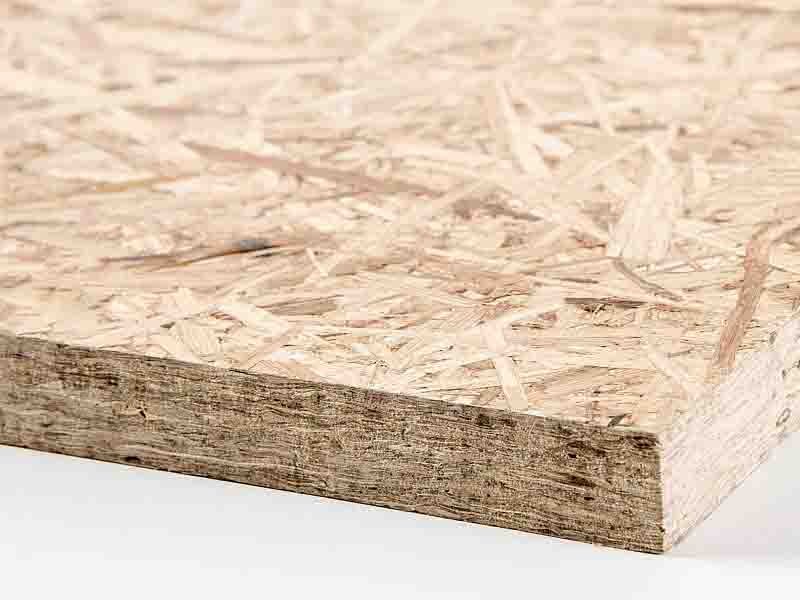
Understanding Chipboard’s Sustainability Limits
I see many believe chipboard is eco-friendly because it uses recycled wood. I thought this, too. The reality is not that simple. Chipboard’s main claim to sustainability comes from using wood byproducts. Manufacturers glue small wood particles into sheets. This process keeps wood waste from the dump at first. However, the trouble starts with what happens after use.
The Role of Adhesives
The main limit comes from the adhesives in chipboard. Glues like urea-formaldehyde bind the wood particles. These glues create a strong, smooth board, but also trouble recycling. Most recycling plants cannot handle products with these chemicals. In my experience, panels with water damage or surface coatings become almost impossible to recycle. These panels must often go to landfills.
Comparing Chipboard to Other Engineered Woods
See the table below:
| Material | Uses Recycled Wood | Typical Lifespan | Easy to Recycle | Best Disposal Option |
|---|---|---|---|---|
| Chipboard | Yes | 10-20 years | Rarely | Repurposing or special |
| MDF | Yes | 15-25 years | Rarely | Special facility |
| Plywood | Sometimes | 20-30 years | Sometimes | Repurposing or recycle |
Chipboard and MDF both use glue and wood scraps. Because of this, both face the same recycling problem41. Plywood sometimes uses less glue, but disposal can still be tricky. Chipboard’s short use–usually just one furniture life–means it becomes waste quickly.
What Are the Best End-of-Life Options?
If a chipboard panel is still solid and dry, I try to repurpose42 it. People often cut large sheets to make shelves or garage work tops. For small or damaged pieces, I look for specialty recyclers. Some facilities extract energy from waste chipboard or process it into new building materials. These options are rare, but they are growing as sustainability draws more interest. I always avoid burning chipboard at home; the glues release harmful fumes.
My Personal Approach
In my own projects, I save undamaged chipboard for reuse. I once made a set of garage organizers from shelves saved from an old wardrobe. For unusable scraps, I check with local recycling centers. Sometimes, schools and theaters want sheets for set pieces. Sharing is another good end-of-life route.
Long-Term View
Chipboard offers big sustainability value43 at the start by using waste wood, but its end-of-life is a challenge. I believe careful use, repurposing, and responsible disposal help reduce the burden. If you want low-waste building materials, checking local options before purchase makes good sense. The choices made at disposal matter as much as those made at the start.
Chipboard primarily uses recycled wood materials, making it initially eco-friendly.True
Chipboard is made from wood byproducts, which allows for the repurposing of waste wood.
// The claim reflects the content stating that chipboard uses recycled wood, supporting its initial eco-friendliness.
Chipboard can be easily recycled due to its low adhesive content.False
Chipboard's adhesives, particularly urea-formaldehyde, complicate recycling, making it rarely recyclable.
// The false claim suggests that chipboard is easily recyclable, which contradicts the content explaining the challenges posed by adhesives.
Conclusion
Quality chipboard furniture typically lasts 5-20 years, depending on maintenance, environmental conditions, and manufacturing standards. Proper care significantly extends its lifespan.
-
High-grade chipboard offers lasting value and durability. Explore this link to understand its advantages over cheaper alternatives. ↩
-
Understanding raw material quality is crucial for ensuring the durability and performance of chipboard. Explore this link to learn more. ↩
-
Board density plays a significant role in chipboard's durability. Discover more about its impact on furniture quality by checking this resource. ↩
-
Explore the benefits and drawbacks of UF resin to make informed choices for your furniture projects. ↩
-
Learn how MUF and phenolic resins enhance moisture resistance, ensuring durability in humid environments. ↩
-
Understanding the importance of thickness can help you choose more stable and durable chipboard for your furniture needs. ↩
-
Understanding hygroscopic materials can help you make informed choices about building materials and their suitability for different environments. ↩
-
Learn about the factors that lead to early swelling in chipboard to avoid costly mistakes in your projects. ↩
-
Exploring the impact of UV radiation on chipboard can guide you in protecting your furniture and ensuring its longevity. ↩
-
Learning about MR chipboard can help you choose the right materials for areas prone to moisture, enhancing durability. ↩
-
Explore expert tips on maintaining your furniture to ensure it lasts longer and remains in good condition. ↩
-
Understanding how to care for chipboard can significantly enhance its durability and save you money in the long run. ↩
-
Exploring laminate's impact on furniture can guide you in selecting long-lasting pieces. ↩
-
Learning about humidity's effects can help you maintain your furniture better and extend its life. ↩
-
Understanding proper edgebanding can significantly enhance the longevity of your furniture projects. Explore this resource to learn more. ↩
-
Exploring joint choices can help you make informed decisions that protect your investment and ensure daily usability. ↩
-
Learning effective assembly techniques can prevent common mistakes and improve the overall strength of your furniture. ↩
-
Learning how to address issues with screws in chipboard can prevent damage and extend the life of your furniture. ↩
-
Exploring the benefits of dowels and cam locks can help you make informed choices for stronger furniture joints. ↩
-
Discover how regular maintenance can enhance the longevity and appearance of your furniture investment. ↩
-
Understanding moisture's impact on chipboard can help you take preventive measures to protect your furniture. ↩
-
Learn effective maintenance tips to ensure your chipboard furniture remains sturdy and lasts longer. ↩
-
Understanding wood material selection is crucial for making informed choices that enhance furniture longevity and value. ↩
-
Exploring engineered wood products can reveal their advantages in durability and cost-effectiveness for your furniture needs. ↩
-
Knowing the typical expected lifespans helps you choose materials that will last, ensuring your investment is worthwhile. ↩
-
Discover why high-grade plywood is a strong option for furniture, especially in high-use areas, and its advantages over other materials. ↩
-
Explore the advantages of chipboard furniture, including affordability and ease of assembly, to make informed furnishing choices. ↩
-
Exploring the benefits of modular furniture can inspire creative and flexible solutions for your living space. ↩
-
Learning about flat-pack design can enhance your understanding of efficient furniture solutions and space-saving techniques. ↩
-
Understanding chipboard issues can help you maintain your furniture and prevent costly replacements. Explore this resource for detailed insights. ↩
-
Discover the L/180 span rule to ensure your shelves are safe and functional, preventing potential accidents or damage. ↩
-
Understanding shelf sag can help you identify when your furniture is at risk of collapse, ensuring safety and longevity. ↩
-
Identifying delaminating surfaces is crucial for maintaining furniture integrity and preventing further damage. ↩
-
Recognizing structural weakness early can save you from costly repairs or accidents, ensuring your furniture remains safe to use. ↩
-
Explore this link to understand the EN 312 standard, which ensures the quality and durability of chipboard furniture, crucial for making informed purchases. ↩
-
Discover the importance of third-party certification in ensuring furniture safety and quality, helping you make better buying decisions. ↩
-
Understanding quality control is crucial for ensuring product reliability and longevity, which directly impacts consumer satisfaction. ↩
-
Third-party stamps indicate compliance with safety and quality standards, ensuring you make informed purchasing decisions. ↩
-
Exploring this resource will provide insights into the advantages of eco-friendly materials and their impact on sustainability. ↩
-
This link will help you understand the challenges chipboard faces at the end of its lifecycle, crucial for making informed choices. ↩
-
Understanding the recycling challenges of chipboard and MDF can help you make informed decisions about waste management and sustainability. ↩
-
Exploring repurposing ideas for chipboard can inspire creative projects and promote sustainability by reducing waste. ↩
-
Learning about the sustainability value of chipboard can guide eco-friendly building choices and highlight its benefits in reducing waste. ↩
